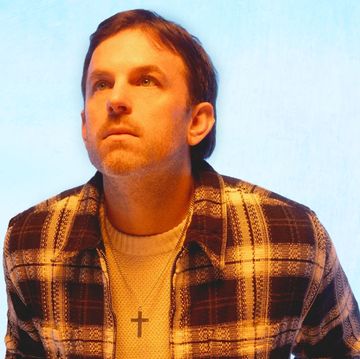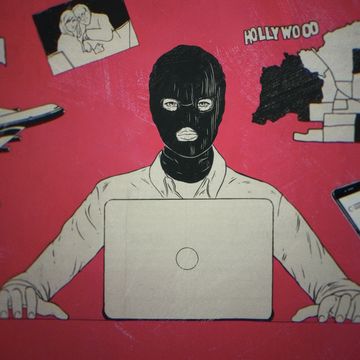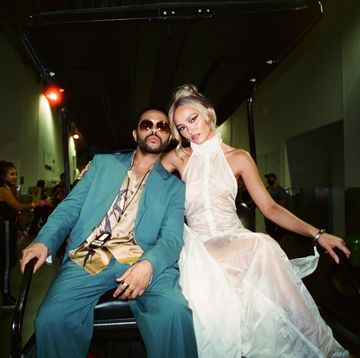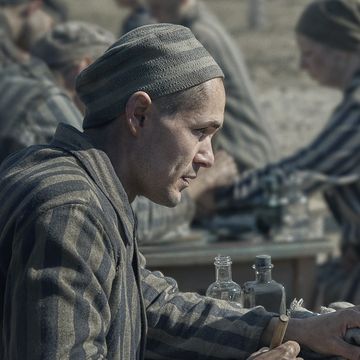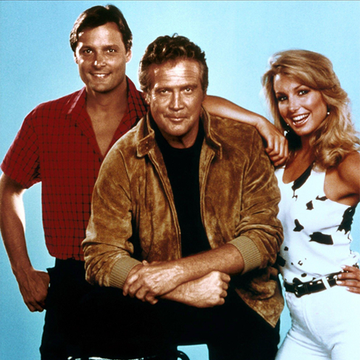When you think of the mafia’s mid-twentieth century heyday, northeastern Pennsylvania isn’t the region that usually springs to mind. But one of the country’s most powerful mob bosses allegedly controlled organised crime in Scranton, Wilkes-Barre, and upstate New York, and may have ordered the most infamous mafia hit in American history. Now, Russell Bufalino has been brought to life by Joe Pesci in Martin Scorsese’s The Irishman. Here’s what you need to know about the real-life figure.
Who was Russell Bufalino?
Bufalino was born in Sicily in 1902, and as a child moved with his family to America, where they settled in Buffalo, New York. He began committing petty crimes and attracted the attention of Northeastern Pennsylvania mob leader Joseph Barbara.
According to some sources, Bufalino played a major role in a mob debacle that forced the FBI to admit that the mafia was real: The 1957 Apalachin meeting. In his capacity as Barbara’s underboss, Bufalino reportedly organised the meeting which was intended to be a venue for mobsters from around the country to gather and settle disputes. But state troopers noticed the small army of luxury cars with out of state plates that converged at Barbara’s home in the tiny town of Apalachin, New York, and set up a roadblock.
The gathered mobsters panicked, and some scattered into the woods. Sixty accused mafia members were arrested, and 20 of them were eventually convicted of obstruction of justice for refusing to say exactly what had brought them to Apalachin, though these convictions were later overturned. The raid attracted so much national news coverage that J. Edgar Hoover’s FBI, which had ignored the mob in order to devote more resources for its hunt for communists, was forced to admit that the mafia existed in the wake of the Apalachin arrests.
In the wake of the Apalachin fiasco, Bufalino emerged as the head of organised crime in the northeastern Pennsylvania/upstate New York region. It was a comparatively small operation, with only around 50 made men, but it controlled operations involving loan sharking, gambling, and racketeering. Like many in the mob at the time, he reportedly did business in Cuba before the nation’s revolution, and is rumoured to have been recruited by the CIA to work with other mobsters on the failed Bay of Pigs invasion. For decades, the U.S. government attempted to deport Bufalino, a legal battle the accused mobster took all the way to the Supreme Court, which declined to consider his appeal. But as Italy wouldn’t accept his return, Bufalino stayed in the States.
While some famous mobsters seemed to court notoriety, Bufalino made every effort to keep a low profile. According to Frank “The Irishman” Sheeran, whose life story as told in Charles Brandt’s I Heard You Paint Houses is the basis for The Irishman, Bufalino hated to see his name in the press. This level of secretiveness means that it’s tough to find out too much about his life and alleged crimes. But in 1978, Bufalino was sentenced to four years in federal prison after being convicted of extortion. After his release, he was convicted of attempted murder for trying to arrange a hit on the witness who’d testified against him in his first trial. He was released in 1989 and died in 1994, at over 90 years of age.
Did Russell Bufalino order the killing of Jimmy Hoffa?
Bufalino’s cousin, Bill Bufalino (played by Ray Romano in The Irishman), was the personal attorney for famed Teamsters president Jimmy Hoffa. And according to Teamsters official and mob affiliate Sheeran, he, Russell Bufalino, and Hoffa had all been close friends and associates. The union was deeply involved in the mob, which was in the habit of taking loans from the organisation’s pension fund. In 1964, Hoffa was convicted of bribery and fraud, and served five years of a 13 year prison sentence, before receiving a commutation from then-president Richard Nixon.
After his release, Hoffa began trying to reclaim control of the Teamsters, and mobsters reportedly feared that he would be willing to cooperate with authorities. So, according to Sheeran’s account, Bufalino and other high-ranking mafia members decided to have Hoffa murdered.
Sheeran said that, on Bufalino’s orders, he and two other mafiosi picked Hoffa up outside of the Machus Red Fox restaurant in suburban Detroit on July 30, 1975, ostensibly to take him to a peacemaking meeting. Instead, they drove to an empty house, where Sheeran said he shot Hoffa, while a different crew followed to dispose of the body. Hoffa’s disappearance remains unsolved; he was declared dead in 1982.
But Sheeran’s account has been very widely disputed. According to critics of Brandt’s book, Sheeran was just a relatively small-time criminal who told tall tales that greatly inflated his own mafia status. (Sheeran also claimed a passing involvement in, among other famous crimes, the assassination of John F. Kennedy.) If so, he wouldn’t be alone—the New York Times reporter Selwyn Raab pointed out to Slate that 14 people have claimed to kill Hoffa. But Sheeran’s name does come up in the FBI files related to the murder, and he was in Detroit at the time of the killing. According to some accounts, he was involved in the murder, but didn’t play the major role he later assigned himself.
According to Sheeran’s doubters, while the Irishman may not have been Hoffa’s killer, Bufalino may still have ordered the execution. Hoffa had feuded with another union leader, New Jersey mobster Anthony “Tony Pro” Provenzano. The day of his disappearance, Hoffa reportedly told his wife that he intended to meet with Tony Pro to make peace, and an FBI informant said that Provenzano’s men had killed the union leader. But, according to journalist Vince Wade, who broke the news of Hoffa’s disappearance. Provenzano wasn’t powerful enough to order such a high-profile murder—and it was Bufalino who ordered the hit.
Bufalino died more than 25 years ago, and it’s likely we’ll never know the full extent of the tight-lipped mobster’s crimes. “Russell was so good at keeping his mouth shut,” one organised crime investigator told a local Pennsylvania paper in 2011. "He was really old school. It was a waste of time bugging his rooms. There was no careless talk, no careless chatter.”
Gabrielle Bruney is a writer and editor for Esquire, where she focuses on politics and culture. She's based (and born and raised) in Brooklyn, New York.






